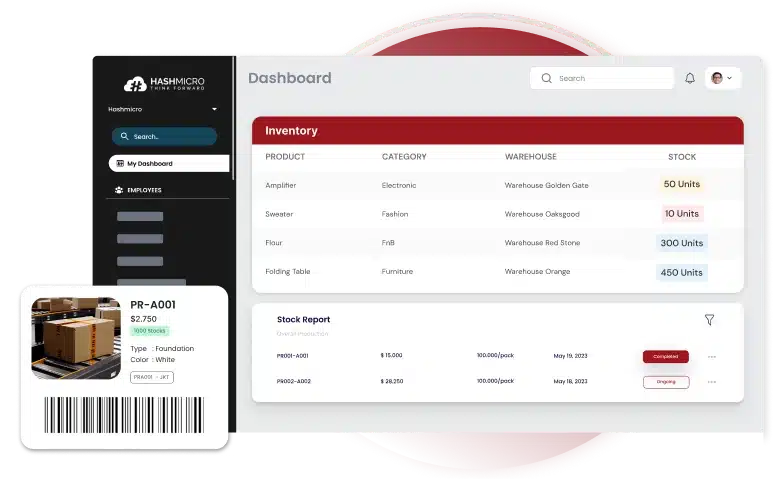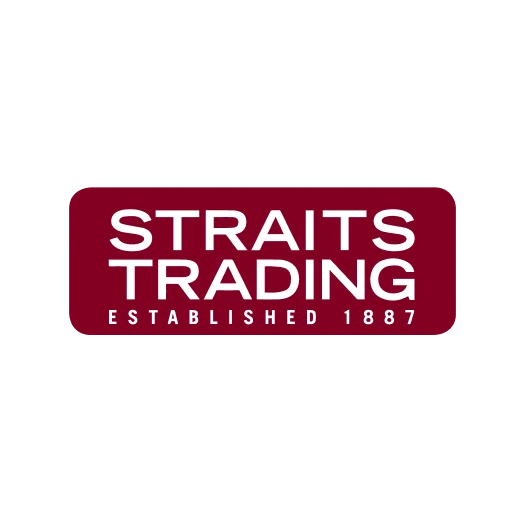I often see businesses struggling with disorganized inventory and limited space, where poor warehouse racking leads to operational bottlenecks. These structural inefficiencies make it difficult to retrieve items quickly and increase the risk of product damage.
This disorganization raises costs, but implementing warehouse management software alongside proper racking offers a strategic fix. This combination streamlines workflows and ensures your storage infrastructure supports broader supply chain goals.
In this guide, I will explore how to select and implement the right racking system for your specific needs. Read on to discover strategies that enhance safety and boost your overall business profitability.
Key Takeaways
|
What Is Warehouse Racking?
Warehouse racking is a material handling system designed to store products vertically on multiple levels to optimize cubic space. It creates an organized structure that allows businesses to maximize storage capacity within their existing floor footprint.
This system is typically implemented when a facility runs out of floor space or needs to improve inventory accessibility. It serves as the operational backbone for businesses aiming to streamline receiving, storage, and picking processes.
Why Is Warehouse Racking Important for Your Business?

Investing in a robust racking system is a foundational step toward achieving operational excellence and long-term stability. It transforms a chaotic storage area into a streamlined environment that supports business growth.
- Space Optimization
It maximizes vertical space utilization, allowing you to store significantly more inventory without expanding your facility’s footprint. This vertical approach helps avoid the substantial costs associated with relocating or constructing new warehouses. - Operational Efficiency
Organized racking provides specific locations for every item, which drastically reduces the time employees spend searching for goods. This structure streamlines picking processes and ensures faster order fulfillment for your customers. - Workplace Safety
Professional racking systems are engineered to hold specific heavy loads, preventing dangerous stack collapses that occur with floor storage. This structural integrity protects your workforce from injury and safeguards your inventory from costly damage. - Inventory Accuracy
Racking supports systematic inventory management by enabling precise labeling and tracking for every pallet position. This organization facilitates accurate cycle counts and helps prevent stock discrepancies that lead to lost sales.
Most Common Types of Warehouse Racking
Selecting the specific type of racking depends heavily on your inventory volume, SKU variety, and turnover rates. Here are the most common systems designed to address distinct storage and accessibility challenges.
- Selective pallet racking
Selective pallet racking offers direct access to every single pallet, making it the most versatile choice for low-volume, high-variety inventory. It provides 100% selectivity but requires more aisle space compared to higher-density options. - Double deep racking
Double deep racking stores pallets two deep to increase density by reducing the number of required aisles. This system requires specialized deep-reach forklifts and operates on a Last-In, First-Out (LIFO) basis. - Drive-in & drive-thru racking
These systems allow forklifts to enter the structure, offering high-density storage for large quantities of homogenous products. They are ideal for goods with low SKU counts where immediate selectivity is not critical. - Pallet flow racking (FIFO)
Pallet flow racking uses gravity rollers to move pallets from the loading side to the picking side, ensuring a First-In, First-Out (FIFO) flow. This dynamic system is perfect for high-turnover, perishable goods that require strict stock rotation. - Push back racking (LIFO)
Push back racking stores pallets on nested carts that glide forward when the front pallet is removed, operating on a LIFO principle. This system offers higher density than selective racking while maintaining better selectivity than drive-in systems. - Cantilever racking
Cantilever racking features arms extending from a central column to store long or irregularly shaped items without front obstructions. It is specifically designed for materials like lumber, pipes, and furniture that do not fit on standard pallets. - Carton flow racking
Carton flow racking utilizes inclined shelves with wheels to gravity-feed cases or totes to the picking aisle. This system separates stocking and picking activities to enhance efficiency in high-volume order fulfillment centers.
Key Components of a Warehouse Racking System

Understanding the anatomy of your racking system is essential for ensuring proper installation and ongoing maintenance. Each component plays a specific role in maintaining the structural integrity and safety of the storage unit.
- Upright frames
Upright frames are the vertical columns that transfer the weight of the stored inventory to the floor. These components must be anchored securely to ensure the stability of the entire racking structure. - Load beams
Beams are the horizontal weight-bearing rails that connect the uprights and support the pallets. They are adjustable to accommodate different load heights and must be rated for the specific weight they carry. - Wire decking
Wire decking is a safety mesh placed across the beams to prevent pallets or loose items from falling through. It increases stability and allows water from overhead sprinklers to reach lower levels during a fire. - Row spacers
Row spacers are metal bars used to connect two back-to-back rows of racking for added stability and consistent spacing. They ensure the flue space between racks remains open for fire safety compliance.
How to Choose the Right Warehouse Racking System
Choosing the optimal racking system requires a data-driven analysis of your specific business needs and physical constraints. Following these strategic steps will ensure you select a solution that maximizes efficiency and scalability.
- Analyze inventory characteristics
Analyze your product characteristics, including size, weight, and SKU velocity, to determine the necessary load capacity and rack type. Understanding whether you handle fast-moving or slow-moving goods dictates the balance between density and accessibility. - Evaluate warehouse layout
Assess your warehouse layout by measuring ceiling height and identifying obstructions like columns or doors. Mapping out the physical space ensures the racking design optimizes the available cubic footage without hindering workflow. - Consider material handling equipment
Evaluate your existing material handling equipment, such as forklifts, to ensure they are compatible with the racking system’s aisle width and height. Mismatched equipment can lead to costly retrofits or the need for expensive new machinery. - Plan for scalability
Plan for future growth by selecting a modular system that allows for reconfiguration or expansion as inventory needs evolve. Investing in flexible infrastructure now prevents the need for a complete system overhaul later. - Integrate with technology
Consider how the racking layout will integrate with labeling systems and scanning technology to support digital tracking. A design that accommodates barcode placement facilitates seamless integration with inventory management software.
Best Practices for Warehouse Racking Safety

Maintaining a safe warehouse environment requires a commitment to routine inspections and strict adherence to operational protocols. Implementing these best practices helps prevent accidents and extends the lifespan of your storage infrastructure.
- Professional installation
Ensure your racking system is assembled and anchored by certified professionals according to manufacturer specifications and seismic codes. Proper installation is the first line of defense against structural failure and potential collapse. - Comprehensive operator training
Provide comprehensive training for forklift operators on safe loading techniques and the importance of reporting minor impacts. Educated staff are less likely to cause damage and more likely to identify hazards early. - Routine inspection schedule
Conduct regular visual inspections to identify dented uprights, bent beams, or missing safety clips before they become critical issues. A multi-tiered inspection schedule ensures that damage is documented and repaired promptly. - Adhere to load capacities
Post clear load capacity plaques on every rack bay and strictly enforce weight limits to prevent overloading. Respecting these engineering limits is crucial for maintaining the structural integrity of the system.
Benefits of Integrating Warehouse Racking with a Warehouse Management System (WMS)
Integrating physical racking with digital intelligence unlocks the full potential of your warehouse operations. This synergy transforms static storage into a dynamic system that optimizes speed, accuracy, and visibility.
- Optimized put-away processes
A WMS directs inventory to the most efficient storage bin based on product velocity and rack capacity. This logic ensures high-turnover items are placed in accessible locations to reduce retrieval time. - Efficient picking routes
The system analyzes the racking layout to calculate the shortest possible travel path for order pickers. This route optimization minimizes travel time and significantly increases the number of orders processed per hour. - Real-time visibility
Integrating racking locations with software provides a real-time digital twin of your inventory levels and precise locations. This visibility eliminates the time spent searching for lost items and ensures accurate stock records.
Once you understand how WMS integration improves productivity, the next step is to evaluate implementation costs. HashMicro’s WMS qualifies for up to 70% CTC Grant support, helping Singapore companies reduce digital adoption expenses. Click the banner below to view the pricing breakdown.
Optimize Your Warehouse Operations with HashMicro’s Solution

To maximize the efficiency of your physical infrastructure, HashMicro Warehouse Management Software offers an integrated platform to automate complex logistics. This robust solution connects your racking layout with digital workflows to streamline every aspect of inventory handling.
- RFID and barcode integration
This feature captures product data instantly through scanners to update inventory records upon receiving or movement. - 3D warehouse visualization
The system generates a digital model of the warehouse layout to simulate and analyze storage configurations. - Stock forecasting and reordering rules
Algorithms analyze historical usage patterns to calculate optimal reorder points and trigger procurement requests. - 3-Step picking, packing, and delivery management
The software segments the fulfillment process into distinct digital stages to track order progress sequentially. - Real-time inventory and aging reports
The system aggregates data from all storage locations to display current stock levels and identify aged items.
Transform your warehouse efficiency today by experiencing how our integrated solution works in real-time. Click here to try the free demo and see the difference for yourself.
Conclusion
Warehouse racking is a strategic asset that defines the safety, capacity, and speed of your logistical operations. Selecting the right system based on your specific inventory needs ensures a scalable and efficient storage environment.
To fully leverage this infrastructure, integrating it with HashMicro Warehouse Management Software is essential for modern business success. This technology provides the intelligence needed to optimize workflows and maintain accurate control over your stock.
Don’t let outdated methods hold your business back from achieving its full operational potential. Start your journey toward a smarter warehouse today by signing up for a free demo.

FAQ about Warehouse Racking
-
What is the lifespan of warehouse racking?
Most warehouse racking systems can last 10–20 years with proper maintenance. Their lifespan depends on load usage, handling equipment, environmental conditions, and how frequently the racks undergo inspection. Well-maintained racks can even last longer with minor repairs.
-
Does warehouse racking need a Safe Working Load label?
Yes. Racking systems must have a clearly displayed Safe Working Load (SWL) sign so operators know the maximum capacity each bay can hold. This prevents overloading accidents and ensures compliance with safety standards.
-
Do all warehouse racking systems need inspections?
Absolutely. All racking types require periodic inspections, even if they appear stable. Regular checks help detect loose bolts, bent frames, or damaged beams early, lowering the risk of workplace accidents and costly collapses.
-
Are there safety regulations that apply to warehouse racking?
While OSHA standards generally apply to the US, many countries follow similar guidelines focusing on load capacity, installation, and safe operation. In Singapore and Malaysia, companies follow workplace safety regulations that emphasize load labeling, stability, and regular inspections.
-
Can warehouse racking be relocated after installation?
Racking can be moved, but it must be dismantled and reinstalled correctly. Professional handling is recommended to avoid structural issues.

















































